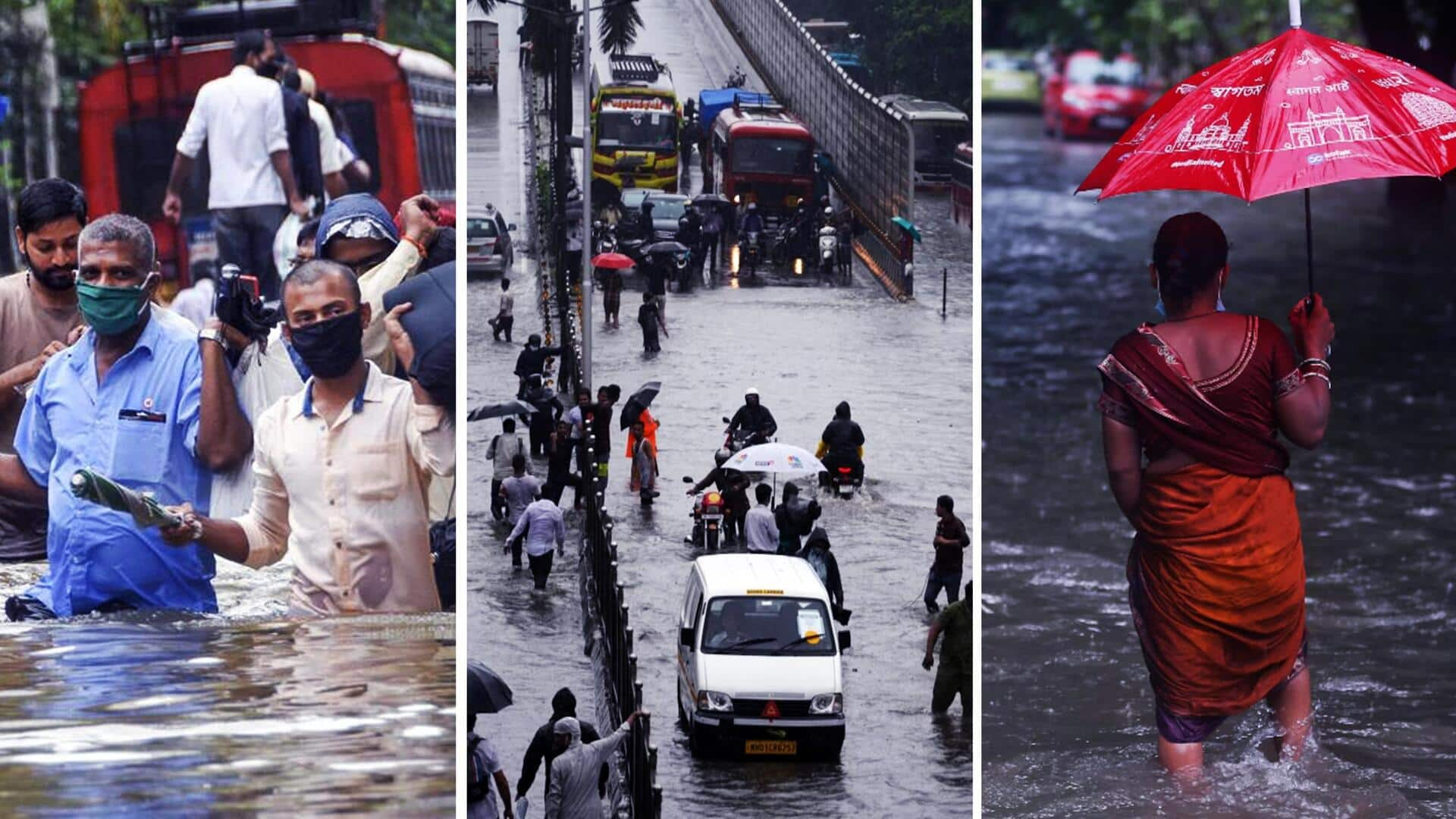
Explained: Why Mumbai floods every year after rains
What's the story
Mumbai—India's commercial capital—witnesses flooding every year due to heavy rains, disrupting local trains, road transport, and air traffic for days at a stretch. On Monday, the city received approximately 300mm of rain between 1:00am and 7:00am, bringing it to a standstill. Consequently, Maharashtra Chief Minister Eknath Shinde appealed to residents to stay indoors until the situation normalizes. Let's take a look at why flooding is an annual phenomenon in the city.
Infrastructure problem
Outdated drainage system, city's location lead to waterlogging
According to experts, Mumbai's outdated drainage system, destruction of natural climate barriers, and unsustainable urbanization are key factors causing the city to flood during heavy monsoon. Another crucial aspect contributing to waterlogging is Mumbai's location. Much of the city is built on reclaimed land, but inadequate filling has resulted in several low-lying and saucer-shaped areas. During heavy rains, like those on Monday, water flows into these areas, such as Sion, Andheri, and Khar, exacerbating the flooding issue.
Outdated infrastructure
Drains fail to handle Mumbai's heavy rains
Notably, Mumbai's outdated drainage system struggles to cope with the heavy rainfall typical during monsoons. The city's stormwater drainage network, nearly a century old, includes 2,000km of surface drains and about 400km of underground drains. These drains are designed to handle 25mm of rainfall per hour during low tide, yet monsoon downpours in Mumbai often exceed 50mm per hour. This inadequate capacity contributes significantly to the city's frequent flooding issues.
Twitter Post
Watch: Mumbai has witnessed continuous rain since Monday
#WATCH | Maharashtra: Heavy rain lashes parts of Mumbai city; visuals from Marine Drive
— ANI (@ANI) July 8, 2024
IMD issues high tide alert in Mumbai following incessant heavy rainfall. pic.twitter.com/YOyvYLC4yO
Concretization
Urbanization reduced effectiveness of Mumbai drains
Separately, Mumbai's drainage system, designed by the British when the city was largely green, is now inadequate due to extensive urbanization. Originally, it was assumed that only 50% of rainwater would need to be drained, the rest would percolate to the ground—which is a no longer a possibility in the heavily concretized city. In Mumbai's suburbs, roadside drains and nullah systems get choked with garbage, slowing drainage during heavy rains and causing severe waterlogging.
Clogged drains
Rapid construction boom exacerbates Mumbai's chronic waterlogging
Mumbai's chronic waterlogging is exacerbated by its rapid construction boom. As natural spaces turn into built-up areas, the land loses its ability to absorb water, leading to flooding. Additionally, construction debris clogs drains and nullahs, hindering water runoff. The relentless expansion not only impacts forests but also affects the coastline, further straining the drainage system and escalating waterlogging issues.
Key factor
Loss of Mumbai's mangroves
Several environmentalists have pointed to the loss of mangroves as a key factor in Mumbai's flooding issues. A few years ago Debi Goenka, a city-based environmentalist was quoted by news agency PTI as saying, "Destruction of mangroves has definitely been one of the major causes of flooding, since the land reclaimed from mangroves is now blocking the rain water from flowing out into the sea. The capacity of mangroves to absorb flood water has also reduced."